The best emergency flashlights
1lumen selects and reviews products personally. We may earn affiliate commissions through our links, which help support our testing.
Table of contents:
Jump right to the category you are most interested in
We are on a mission.
Stop relying on fake Amazon reviews, top-10 websites, hearsay, or even manufacturers’ specs.
We test flashlights to separate the wheat from the chaff and currently have over 600 flashlights tested. Just for you! No joke!
You still don’t trust me?
The majority of the top 10 emergency flashlight sites you saw in Google are owned by people who know nothing about flashlights! And even worse, they just copy and paste information from other websites, including ours. You can spot that with 1 eye. (I’m Dutch, so forgive me for my funny English).
I encourage you to check out even just one of our in-depth reviews, to know we know what we are talking about!
1Lumen.com is 100% focused on flashlights, and we (on our team) have spent hundreds and hundreds and hundreds of hours testing and reviewing flashlights. Learn from the experts! Read our reviews.
Emergency flashlights: what I learned from an emergency
Before we jump into our recommended flashlights for emergency situations, I’d like to take a minute and explain what you should probably take into consideration.
Back in 2011, I (Marco) lived in Tokyo, when the big Tohoku earthquake hit Japan. I’m not 100% sure whether I had an emergency kit before that event or not, but at least I remember seriously looking into one the next day.
Unfortunately, many of these emergency kits get neglected after a while, and so will the flashlights inside these emergency kits. I know that most of the emergency lights in Japan, at that time, used incandescent light bulbs instead of LED. And most, if not all of them used D-size batteries.
How do I know?
Well, the day after the earthquake most D-size batteries were sold out, even though there were still plenty of AAA and AA batteries available!
Unfortunately, Alkaline batteries are the worst batteries to keep in your emergency bag. Why? Because they leak, especially if kept inside a device like a flashlight.
A better solution is lithium batteries. CR123A batteries (the ones that were popular in film cameras) can be stored for 10 years without a problem. Rechargeable batteries like NiMH and Lithium-Ion are also a much better option than Alkalines. Especially, Panasonic Eneloop AA and AAA batteries, since they keep their charge for more than 10 years!
But the problem is that they are usually not available in stores when trouble hits.
Some Flashlight tips for emergencies :
Dos (and tips, recommendations)
- Lithium batteries (CR123A, Lithium-Ion, etc) can be stored for a very long time (usually 10+ years)
- If you choose rechargeable AA or AAA batteries, I recommend the standard Panasonic Eneloop batteries with 1900mAh, since they can keep their charge the longest from all NiMH batteries
- Store batteries always outside the flashlight! And if you don’t want that, make sure you unscrew the tailcap of the flashlight, so there the electric circuit is broken.
- Store the emergency kit in a dark, dry, and cool place.
- Get a flashlight with a simple User Interface
- Get a battery charger that can run on 12V, so you can charge the batteries in your car or with a car battery if you don’t have power.
- Maybe even better than a battery charger that works on 12V: get a USB charger, so you can charge on the road, or anywhere with a USB connector (laptop, car, train, boat, etc)
- Look for an emergency flashlight that accepts multiple kinds of batteries (different sizes and/or different voltages). That way, you have more chances of getting the right battery to work.
- Discharge and recharge batteries in your emergency kit at least 1 time a year (it also helps to spot any bad batteries)
- Get a cheap flashlight beam diffusor so you can use the flashlight as a lightbulb (a diffuser spreads the light into a wider area, kind of like a light bulb)
- You can even get a solar charger that can charge NiMH batteries and Lithium-Ion batteries. At the moment there are only a few available though.
- Get a flashlight with long runtimes (the lowest modes should be below 5 lumens to last multiple nights on a single battery)
- If you have to choose between AAA and AA flashlights, choose the one running on AA batteries instead of AAA batteries. The reason is simple: AA batteries have 3 times the capacity of AAA.
- When you use rechargeable batteries, and your flashlight stops working, try using an Alkaline battery at the lowest mode. That’s about the only place Alkaline batteries are useful, because you can drain them till the last bit of energy at the lowest voltage. Rechargeable NiMH batteries like Eneloops are much stronger and produce more energy, but they can’t provide much energy below a certain point, whereas Alkaline batteries can continue running for several hours.
- If you have enough room in your emergency kit, add an AAA flashlight! (for the cases when all other batteries are sold out, and because they are so small, more people can have a flashlight)
- Get a flashlight with a magnet in its tailcap, so you can stick it to something while you still have both hands free. Or buy some extra magnets and glue it to the tailcap yourself.
- Get a flashlight with a beacon mode. This mode will blink once every few seconds and lasts long enough for a rescuer to locate your position.
- Add some glow-in-the-dark tape to your flashlights so you can spot them easier in the dark.
- Add tritium vials that can glow for up to 10 years without the need to recharge, so the flashlights are even easier to find, even when they are stored in a dark area.
- If you have still some space left, include a headlamp in your emergency kit! You sometimes really need both hands free.
- Because: Two is one, and one is none
Dont’s
- Never keep a bunch of Alkaline batteries for emergencies, without regularly checking to see if they leaked.
- Don’t keep any Alkaline batteries stored inside a flashlight
- Don’t store your batteries in flashlights that only have an electronic switch (electronic switches drain the battery)
- Don’t use your flashlight in the highest mode to conserve battery
- You better stay away from Anduril-based flashlights for emergencies. 1 because you can accidentally enter a programming mode, or 2. mess up the user interface. That’s not cool in an emergency situation. So keep the emergency flashlight with a simple UI!
Great LED flashlights for emergencies
I will choose a few flashlights that we reviewed and performed really well and are multi-functional. They are also great to have in your car. But the ones mentioned for your car have a few extra options.
Manker E03H II
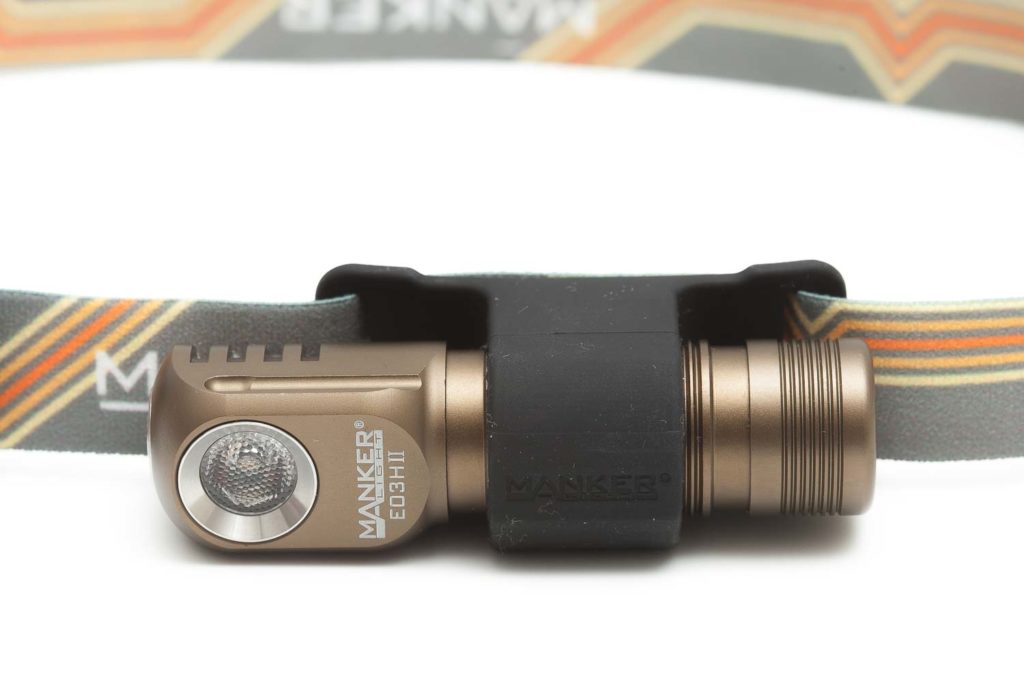
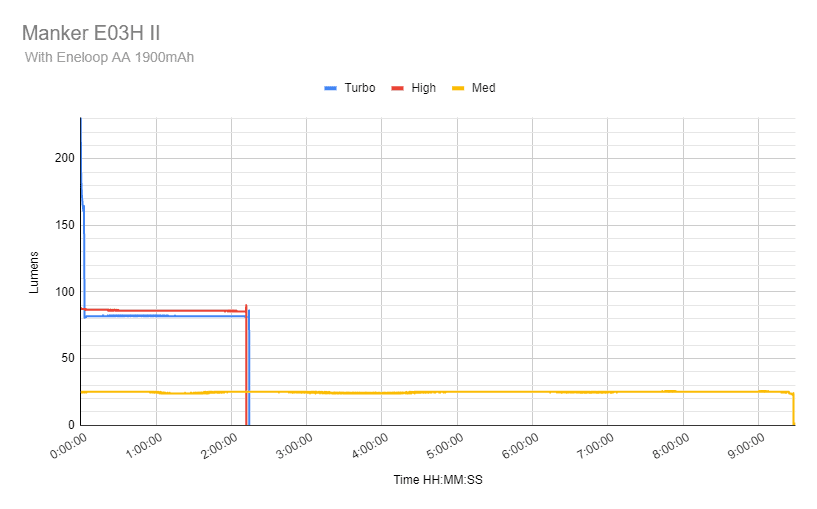
| Specification: | Highlights: |
|---|---|
| Max output | 0.5 lumens – 200 lumens |
| Features | Magnetic tailcap, headband, flashlight, standing, colored filters |
| Battery configuration | 1*AA (alkaline, NiMH) |
The Manker E03II does a few tricks and why it can be such a great choice for emergencies. First of all, it accepts Alkaline, NiMH, lithium, and NiCad AA batteries. So whatever you can find on the shelves in the size of an AA battery should work.
Secondly, the E03H has a magnetic tail cap and includes a head strap. In emergencies where you need both hands, you can use the headband or magnetic tailcap.
Thirdly, its lowest output mode is adjustable, so you can set it as low as you want. This will increase its runtime considerably, and the user interface is easy enough, so you don’t need to worry about forgetting how to enter certain modes.
For these reasons is this one of the most useful AA flashlights for emergencies.
Thrunite TC20 v2
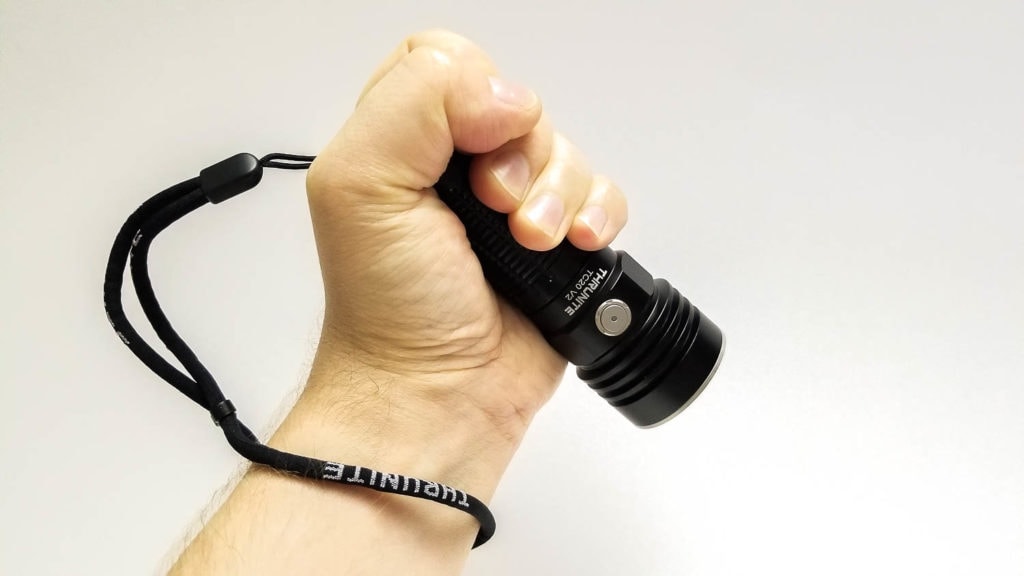
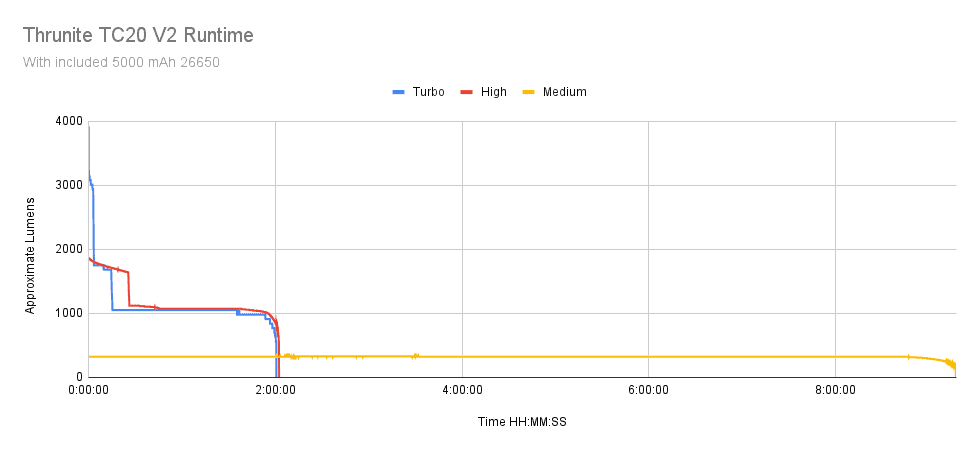
| Specification: | Highlights: |
|---|---|
| Output | 0.3 lumens to 4000 lumens |
| Features | Reaches far, takes multiple batteries, easy UI, USB-C charging |
| Battery configuration | 26650 (and therefore should fit 21700, and 18650 batteries |
The reason why I mention this flashlight is twofold.
First of all, because of the type of battery it uses. A 26650-type flashlight can also accept other types of batteries. Nick (one of our reviewers) reviewed the Thrunite TC20v2 and measured the included battery at 69.3 millimeters, so it also accepts flat top 21700, 20700, and 18650 batteries. So you can use so many kinds of batteries you have lying around. In the worst-case scenario, you could even add a 3AAA battery adapter and make it work!
Besides this, it includes a built-in USB-C charger so you can charge any lithium-ion battery with a 5V USB plug. This could even be in your car, or with a solar charger.
On top of that, the TC20v2 can throw very far. So you can use it for signaling and locating people or objects at a distance. And in combination with a cheap diffuser, you can use it as a candle with very long runtime.
Sofirn BLF LT1
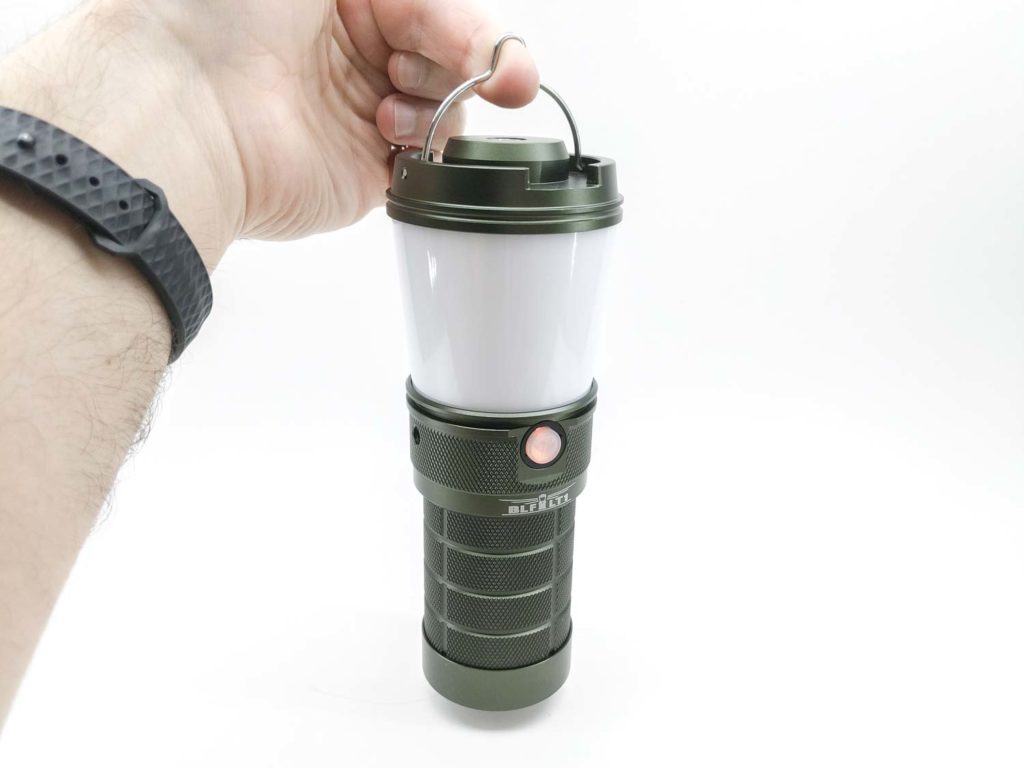

| Specification: | Highlights: |
|---|---|
| Max output | 5-570 lumens |
| Features | Rechargeable, 360-degrees lantern, portable, USB-rechargeable, waterproof, lightweight |
| Battery configuration | 1 to 4*18650 batteries |
It’s great to have a flashlight at hand when you are alone, but using a lantern is even nicer when you are with more people in 1 area. The Sofirn LT1 is an LED lantern with a USB-C charger built into it.
One of the most important things when it comes to emergency flashlights is the runtime. The worst thing that can happen to a flashlight in an emergency situation is running out of power. Having a built-in USB-C charger, you can always charge up the batteries with any USB power adapter. This can be from a laptop, your car, or a solar panel.
On top of that, you don’t really have to use 4*18650 batteries, because the batteries are loaded in parallel. That’s why you can use 3, 2, or even just 1 battery. The brightness is also adjustable to extend the battery lifetime.
Not just great for your camping trip, it’s also very handy for your emergency kit.
FAQ:
-
What do you have to keep in mind looking for a flashlight for emergencies?
There are a few things you have to keep in mind. Besides the obvious reason for a great location, you better look at the following: 1. Is it rechargeable? 2. If not, what batteries does it use? 3. Can you use the flashlight without holding it in your hand? 4. How long will it last on 1 set of batteries? 5. Can you use it for signaling?
-
What are the best batteries for emergency flashlights?
Depending on the type of flashlight you have, you better choose rechargeable batteries that have a long shelf life. Think about Panasonic Eneloop AA or AAA batteries. If you have a lithium-ion-powered flashlight, you don’t have to worry too much, but you better remove the battery from the flashlight during storage. And best is to have an emergency candle.. just in case.
People are also interested in:

The Brightest Flashlights now available

The Best LEP Flashlights we reviewed
